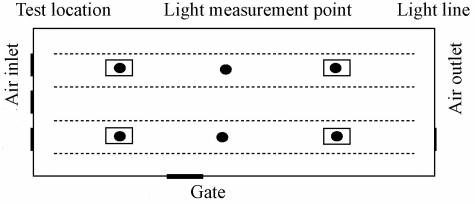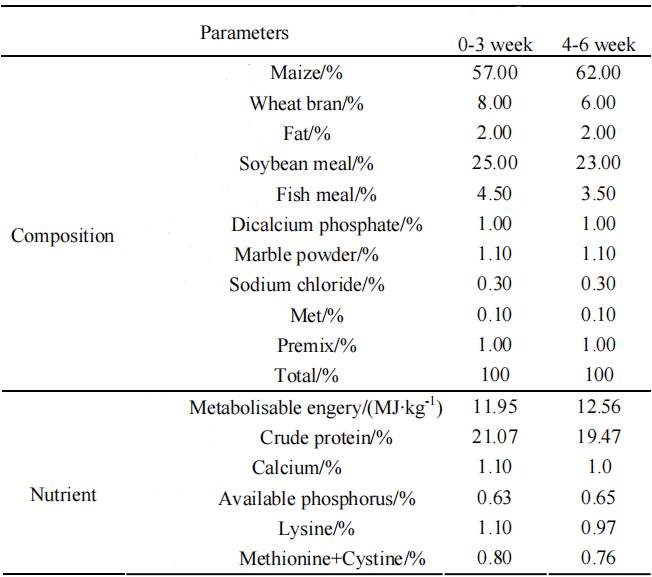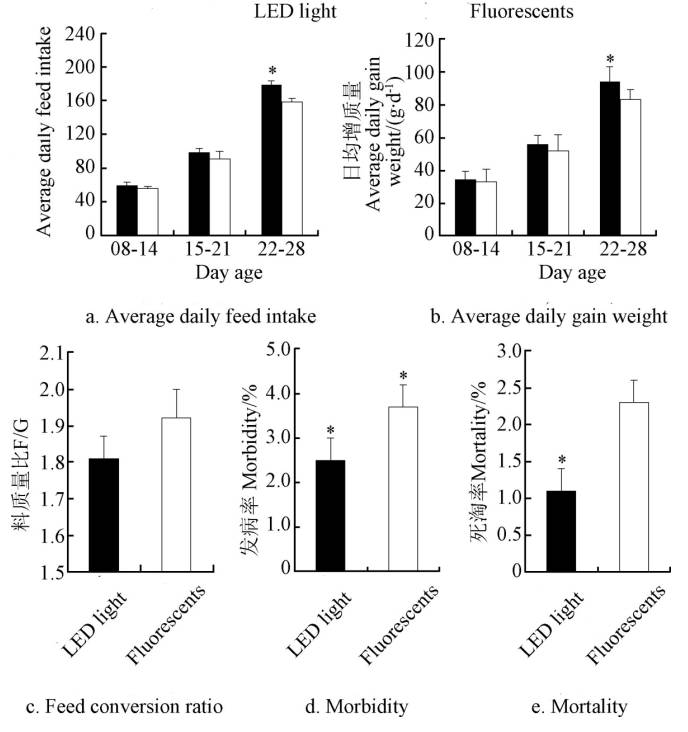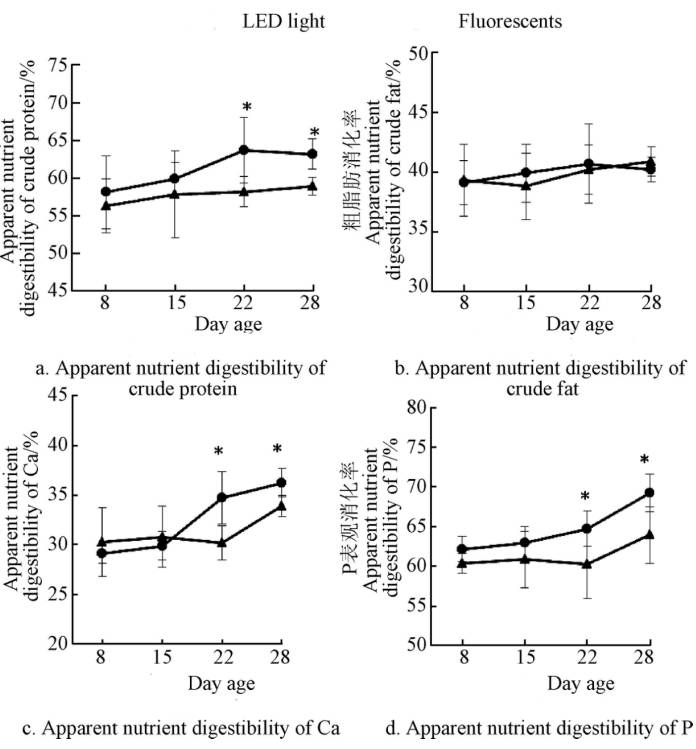Led Poultry House Lighting: Effect of Light on Broiler Production

Directory:
1. Materials and Methods
2. Results and Analysis
3. Discussion
4. Conclusion
Chickens are highly responsive to light, which can trigger signals through the photoreceptors in their retinas or directly stimulate photoreceptors outside the retina via the skull, leading to nerve impulses. This stimulation prompts the hypothalamus to release gonadotropin-releasing hormone, which influences the anterior pituitary gland and regulates hormone secretion in poultry. Consequently, this affects their behavior, rhythms, and significantly affects their growth, health, and sexual maturity. In contemporary poultry farming, artificial lighting interventions can enhance the efficiency of broiler production.
Traditional lighting methods are inefficient, flicker, and consume excessive energy, posing health risks to chickens and negatively affecting poultry production economics, failing to meet the demands of modern broiler farming.
In contrast, LED lighting offers high luminous efficiency, low energy consumption, and customizable options tailored to specific lighting needs, making it increasingly popular in broiler farming. Utilizing LED lights can enhance broiler hatch rates, improve chick quality, reduce stress during growth, strengthen the small intestinal mucosa and immune barriers, and overall improve chicken quality. Research indicates that LED lighting positively influences the growth, behavior, quality, and immunity of broilers by adjusting light colors and durations. However, there is limited research on how LED lighting affects nutrient digestibility in broilers, as well as the concentrations of NH3. CO2. dust, and airborne microbes in poultry houses. This study examines the production performance and nutrient digestibility of 8-28-day-old broilers in two closed houses using LED and standard fluorescent lighting, along with the variations and trends in NH3. CO2. dust, and microbial content in the air of the chicken house, aiming to provide insights for the use of LED lighting in broiler breeding and production.
1. Materials and Methods
1.1 Experimental Animals and Procedures
A total of 240 healthy one-day-old white-feathered broilers with uniform body conditions were chosen and assigned to two treatment groups using a completely randomized design. One group was exposed to warm white LED light (3.000 K) as the experimental group, while the other group was exposed to standard warm white fluorescent light (2.900 K) as the control group. Each treatment consisted of 4 replicates, each containing 30 chickens. The experiment took place on a large broiler farm operated by an agricultural group from March 2 to March 30 (see Figure 1). Both the experimental and control chicken houses were oriented east-west, measuring 180 m in length, 18 m in width, and 3.5 m in height. The chickens were raised on the ground, with mechanical ventilation and unrestricted access to food and water. The lighting schedule was 24 hours for the first 1 to 3 days of age, with light intensity ranging from 16 to 22 lx, averaging (19±3) lx, and 18 hours per day for 4 days of age, with light intensity between 8 to 12 lx, averaging (10±2) lx.
Fig. 1 Schematic representation of the testing location and light measurement points in the broiler house.

1.2 Diet Composition and Nutritional Content
The diet consisted of a corn-soybean meal base, formulated to meet the nutritional requirements of white-feathered broilers. The composition and nutritional content of the basal diet are detailed in Table 1.
Table 1 Composition (mass fraction) and nutrient levels of basal diets for test broilers

1.3 Indicators and Methods for Determination
1.3.1 Assessing Growth Performance
Feeding was halted at 08:00 on days 7. 14. 21. and 28. while access to drinking water remained uninterrupted. After a 24-hour fasting period, the broilers in each treatment group were weighed at 8:00 on days 8. 15. 22. and 29. The average body weight for both the test and control groups was determined based on each replicate. Daily feed intake was meticulously recorded throughout the testing phase. In cases of mortality, feed was promptly measured to calculate total feed consumption. The overall health and production of the broilers were closely monitored, with records kept of any sick or deceased birds. The average daily feed intake, average daily weight gain, feed conversion ratio, incidence rate, and mortality rate were computed using the following formulas:
Average daily feed intake = total feed consumption / (number of chickens × number of days);
Average daily weight gain = total weight gain / (number of chickens × number of days);
Feed conversion ratio = total feed consumption / total weight gain;
Incidence rate (%) = (number of sick chickens / total number of chickens in the pen) × 100%;
Mortality rate (%) = (number of dead chickens / total number of chickens in the pen) × 100%.
1.3.2 Measuring Apparent Digestibility of Feed
Feed and feces samples from the broilers were collected. Feces were gathered using a complete collection method on the 6th, 13th, 20th, and 27th days of the experiment, ensuring that feathers, skin flakes, and any feed on the feces' surface were removed. Fresh feces were weighed, then dried in a forced air oven at 120°C for 24 hours, followed by a 24-hour period at room temperature to regain moisture, after which the mass was recorded. The dried feces were ground and passed through a 40-mesh sieve for further analysis. Following established methods, the levels of crude protein, crude fat, calcium, and phosphorus in both feed and feces were measured, and the apparent digestibility of these nutrients was calculated using the appropriate formula.
Apparent digestibility = (amount of a certain nutrient in feed - a certain nutrient in feces) / a certain nutrient in feed * 100%
2. Results and Analysis
2.1 Effect of LED Light Sources on Broiler Production Performance
Figure 2 illustrates the influence of LED light sources on broilers' average daily feed consumption, average daily weight gain, and the rates of morbidity and mortality.
Fig.2 Effects of LED lights sources on broilers growth performance

Note: * expresses significant difference in two treatments at P<0.05. the same as below.
As illustrated in Figure 2a, there was no notable difference in the average daily feed intake of broilers raised under two different light sources before they reached 21 days of age (P>0.05). Specifically, between 8 and 14 days old, the feed intake for broilers under LED lighting was 59.51 g/d, while those under fluorescent lighting consumed 55.77 g/d, with no significant difference observed. However, from 22 to 28 days old, broilers in the LED-lit chicken house had an average daily feed intake of 178.83 g/d, which represented a significant increase of 13.13% (P<0.05) compared to those in the fluorescent-lit house. Figure 2b shows that prior to 21 days, there was also no significant difference in the average daily weight gain of broilers under the two lighting conditions (P>0.05). In the 22 to 28 days age range, broilers in the LED house gained an average of 93.79 g/d, which was a significant increase of 13.23% (P<0.05) over those in the fluorescent house. Figure 2c indicates that the average feed weight ratios for the two broiler houses were 1.82 and 1.91. respectively, with no significant difference, suggesting that further research is needed to assess long-term effects. Figure 2d reveals that the morbidity rate for broilers in the LED house was 2.45%, significantly lower than the 3.57% rate in the fluorescent house (P<0.05). Similarly, Figure 2e shows that the mortality rate for broilers in the LED house was 1.18%, which was significantly lower than the 2.36% rate in the fluorescent house (P<0.05). This indicates that during the early stages of broiler rearing (before 21 days), LED lighting does not affect average daily feed intake or weight gain compared to fluorescent lighting. However, after 21 days, LED lighting significantly enhances both average daily feed intake and weight gain, while also improving the overall health of the broilers by reducing morbidity and mortality rates.
2.2 Effect of LED Light Source on Nutrient Digestibility in Broiler Chickens
Figure 3 illustrates the influence of LED light sources on the apparent digestibility of nutrients in broiler feed. As depicted in Figures 3a, 3c, and 3d, at 8 and 15 days old, the apparent digestibility of crude protein, calcium, and phosphorus in the feed of broilers raised under LED lighting was not significantly different from those under fluorescent lighting (P>0.05). However, as the broilers aged, the differences in nutrient digestibility between the two light sources became more pronounced. By 22 days of age, the apparent digestibility of crude protein, calcium, and phosphorus in the feed of broilers under LED lighting was significantly greater than that of those under fluorescent lighting, with increases of 9.45%, 14.90%, and 7.48%, respectively (P<0.05). At 28 days, the apparent digestibility of these nutrients in the LED group was also significantly higher, with increases of 7.30%, 6.78%, and 8.29% (P<0.05). Throughout the study, there were no significant differences in the apparent digestibility of crude fat in the feed between the two lighting conditions (P>0.05).
Fig.3 Effects of LED lights sources on broilers apparent nutrient digestibility

3. Discussion
Effect of LED Lighting on Broiler Growth and Metabolism
LED lighting is utilized in broiler housing, enhancing the growth and development of broilers while also improving their production performance without negatively affecting their nutrient metabolism. The findings from this experiment indicate that LED lighting can boost feed intake and daily weight gain in broilers after they reach 22 days of age, enhance the digestibility of crude protein, calcium, and phosphorus in their feed, and lower both the incidence of health issues and mortality rates among broilers, thereby benefiting their overall production performance. This suggests that using LED lighting in broiler houses does not hinder their growth, aligning with findings from other researchers. Additional studies have indicated that yellow-feathered broilers raised under yellow LED lights experience greater weight gain and a lower feed-to-weight ratio compared to those under incandescent lighting. The results of this study demonstrate a significant increase in average daily weight gain for broilers under LED lighting as they age and gain weight.
4. Conclusion
This research indicates that, in comparison to fluorescent lighting, LED light sources do not negatively effect the production performance, nutrient metabolism, or living conditions of broilers aged 8-22 days. Furthermore, they can significantly enhance feed intake and daily weight gain in broilers aged 22-28 days. The use of LED lighting in poultry production is safe, cost-effective, and environmentally friendly, warranting further promotion and implementation.